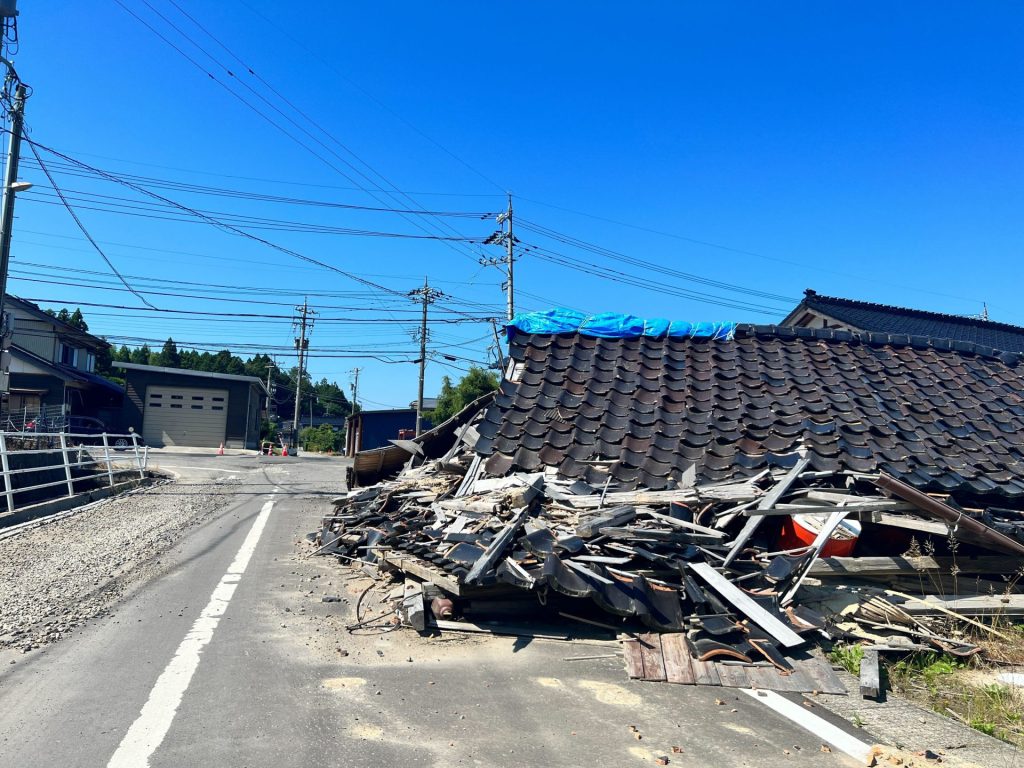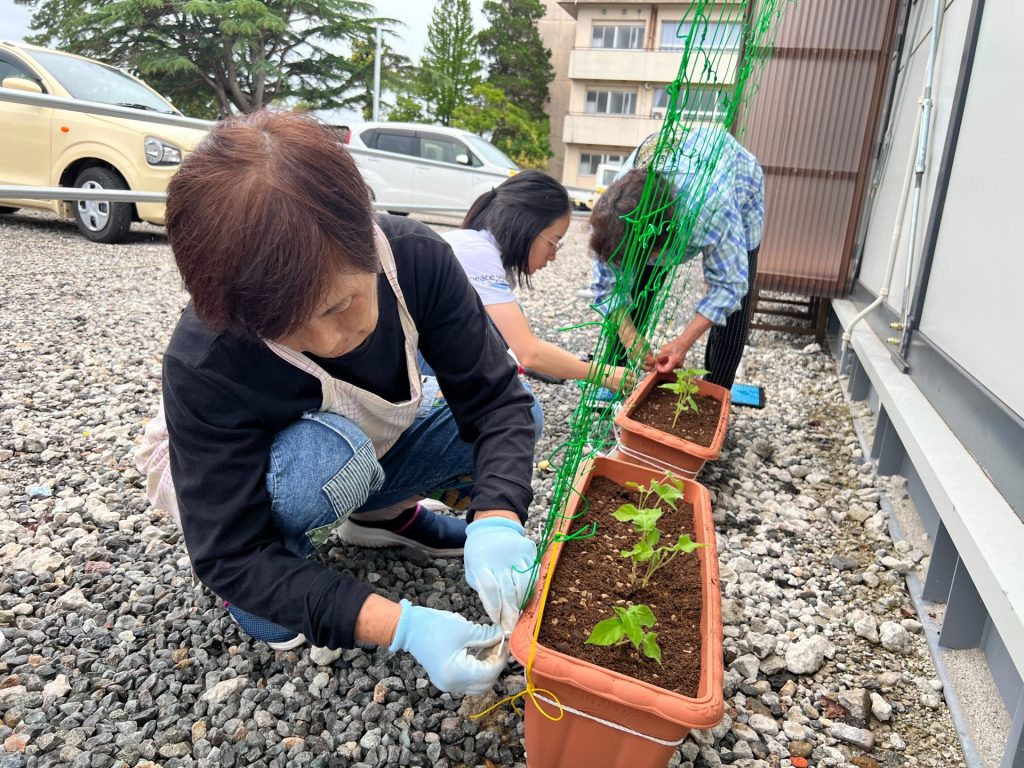Six Months Since Japan’s New Year’s Day Earthquake: Report from the Disaster Zone
This week marks six months since a 7.6 magnitude earthquake struck Japan’s Noto Peninsula on New Year’s Day, killing more than 240 people and leaving tens of thousands without homes, water, electricity, and other basic necessities. Much progress has been made over the last six months, and the Noto community is well on its way in transitioning to long-term recovery. However, many challenges and barriers to recovery remain, and it will still take months or even years for most Noto residents to return to their “normal” lives. Peace Winds teams remain on the ground in Suzu City and are working to meet the needs of survivors on the eastern side of the peninsula.
On one hand, roads are being restored throughout the city, and many local shops are back open for business. On the other hand, scars from the earthquake are still clearly visible in many areas, and the region’s basic infrastructure remains damaged. Water supply has been one of the biggest problems in Noto, and even now, there are still areas without running water.
Crews are also working to remove the debris left by collapsed buildings. Roughly a quarter of the houses in Suzu City have been deemed “totally destroyed,” and only about 100 made it through the disaster without sustaining any damage.
After their homes were destroyed, evacuees were forced to live in schools, gymnasiums, and other community spaces which were converted into evacuation centers. Now, many evacuees have been moving into short-term“temporary housing”: small, prefab structures where they will live until their homes are rebuilt. However, construction of temporary housing has not kept pace with the number of earthquake survivors who need it. The transition to temporary housing is supposed to be finished by the end of August, and 1,850 Suzu City households have applied for these homes. However, only 903 units were completed as of June 16.
In the meantime, more than 370 earthquake survivors are still stuck in the 25 evacuation centers that are still operating in Suzu City. The operation of the centers is the responsibility of the local government, but in order for the spaces to function as an acceptable place to live, they require constant management by a range of actors. Peace Winds has been working alongside the Suzu government to support the day-to-day operations of the evacuation centers–something our teams have also done in the wake of many other natural disasters.
While life in the evacuation centers is difficult, people also report feeling lonely and isolated after relocating to the makeshift temporary housing settlements that are often far from their old neighborhoods, friends, and families. This is especially difficult because nearly 52 percent of Suzu City residents are senior citizens, increasing their likelihood of being cut off from their community and the resources they need. There is a heightened risk of untreated physical and mental health problems for evacuees in temporary housing, and many often develop depression or even commit suicide–a phenomenon that is frequent enough in Japan to be categorized as a “disaster-related death.”

Peace Winds doctors and nurses are working hard to prevent disaster-related deaths by making house calls on evacuees throughout the area. They visit residents to ask questions such as whether they are getting enough sleep, whether they attend necessary medical appointments for chronic conditions, or how they are feeling about the situation overall. They also perform routine checks, such as blood pressure tests, in order to monitor for the physical and mental ailments that can arise when experiencing displacement and major life changes.
Peace Winds teams are also working to foster Suzu’s sense of community. In partnership with the government’s Social Welfare Council, staff in Suzu are hosting events such as baking classes, tea gatherings, and casual community drop-in hours. Teams say they hope that these events will provide an impetus for residents to engage in everyday conversations while also getting to know the neighbors they are living with for the first time since moving into temporary housing.

The financial burden on families is another ongoing barrier to recovery. While there are systems for administering government subsidies to households deemed “partially destroyed” or “totally destroyed,” approximately 5,000 families in Suzu alone are not covered by this. These families receive no public assistance and must find a way to repair or rebuild their homes on their own, which can be extremely difficult depending on their economic circumstances.
Furthermore, inclement weather and ongoing seismic activity in Ishikawa Prefecture make life even more difficult for evacuees. The rainy season just began, causing roof damage to many homes and shelters. Some residents are covering broken tiles with tarps until they can make more permanent repairs.
From January through June this year alone, the Japan Meteorological Agency has reported 1,880 aftershocks with a magnitude of 1 or higher. Although seismic activity has decreased since the January 1 earthquake, residents are being warned to stay on alert for additional tremors. On June 3, another magnitude 5.9 earthquake occurred in the Noto region. All Peace Winds and ARROWS staff are safe, but residents’ anxieties are high. Staff, city employees, and others worked quickly to visit homes and check on residents’ well-being after the latest incident.
A group of Peace Winds staff continues to provide support out of the base camp in Suzu City, and the team will remain there throughout the process of long-term recovery. Our earthquake relief activities in Noto are possible in large part due to contributions from our donors. If you have not yet made a donation and would like to do so, please visit our GlobalGiving page here. We are deeply grateful for your continued support.




